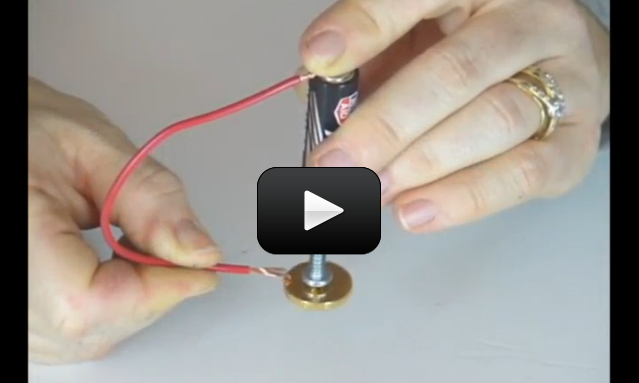Find a spare magnet – one you really don’t care about. Bring it up close to another magnet to find where the north and south poles are on the spare magnet. Did you find them? Mark the spots with a pen – put a N for north, and a S for south. Now break the spare magnet in half, separating the north from the south pole. (This might take a bit of muscle!) You should have one half be a north magnet, and the other a south. Or do you?
One of the big mysteries of the universe is why we can’t separate the north from the south end of a magnet. No matter how small you break that magnet down, you’ll still get one side that’s attracted to the north and the other that’s repelled. There’s just no way around this!
If you COULD separate the north from the south pole, you could point a magnet’s south pole toward your now-separated north pole, and it would always be repelled, no matter what orientation it rotated to. (Normally, as soon as the magnet is repelled, it twists around and lines up the opposite pole and snap! There go your fingers.) But if it were always repelled, you could chase it around the room or stick a pin through it so it would constantly move and rotate.
Well, what if we sneakily use electromagnetism? Note that you can use a metal screw, ball bearing, or other metal object that easily rotates. If your metal ball bearing is also magnetic, you can combine both the screw and the magnet together.
Famous scientist Michael Faraday built the first one of these while studying magnetic and electricity, and how they both fit together. What to see what he figured out?
Here’s what you do:
Please login or register to read the rest of this content.


Electricity flowing through a wire creates a magnetic field. The magnets also create a magnetic field. When you connect the wire to the battery, current begins to flow which creates a magnetic field. That magnetic field from the wire interacts with the magnetic field from the magnet, causing it to spin…due to attraction and repulsion. This is an example of a homopolar motor.
How does this work?
Is your battery fresh? If so, I would recommend trying a different screw to see if that makes a difference. Make sure you’ve got good metal conductivity throughout the experiment. You shouldn’t have to do much except barely brush the surface with a few strands of the wire to set it spinning. Let me know how it goes!
Actually, our magnet is nickel plated. But it’s the magnet that pops up when I click on your link, so I assume it should work. We have the battery poles the proper way, positive end contacting the screw. Any ideas as to why ours doesn’t spin?
And does it matter if our screw head is a little bit fatter?
Will a silver plated magnet work? Trying to figure out why it’s not working. 🙂
Current flows anytime there is an “electric potential difference”, which means anytime you connect a battery, it will cause electricity to move through the wire. Specifically, it makes charge move through the wire. With this experiment, the charge moves through the wire, screw, magnet (since it’s metal-coated), and battery, forming an unusual-looking circuit. You can learn more about the how this works in the advanced physics section on current electricity.
Why is the current flowing from the battery to the wire in the first place? Sorry, I am confused 🙁
I’ll have my team connect with you right away!
Please give us access to the entire grade 4 suite of material. That is what we understood we are getting for signing up to the K-8 material….
Thank you very much!
Regards,
Silvana Petrovici
My son thought it was really neat great lesson
That’s really cool how it works. It is so cool how it spins the magnet and the screw
.